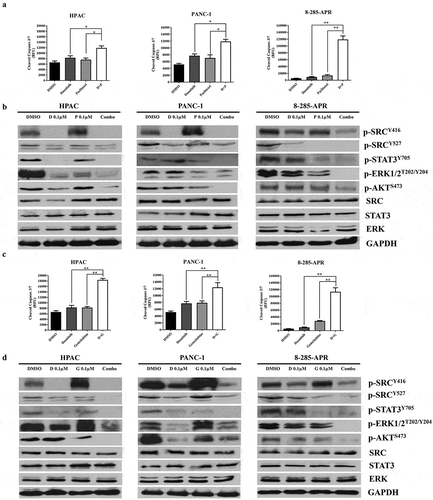Figures & data
Figure 1. p-SRC was highly expressed in pancreatic cancer cell lines and can be induced by paclitaxel or gemcitabine.
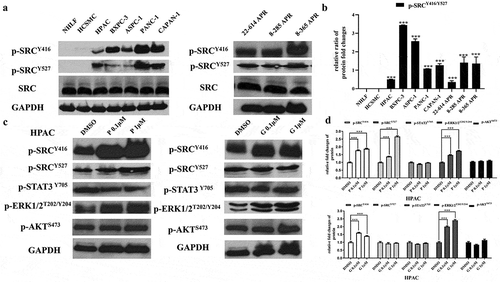
Figure 2. Dasatinib shows synergistic effects when combined with paclitaxel or gemcitabine.
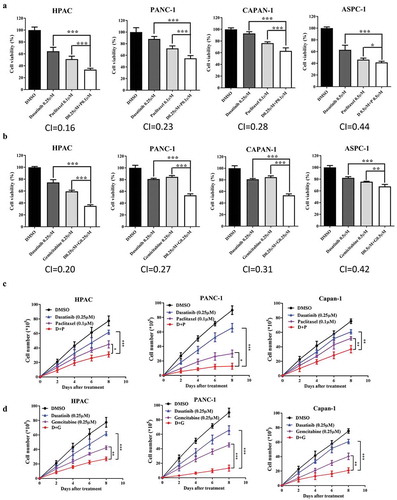
Figure 3. Combination of dasatinib with paclitaxel or gemcitabine can greatly inhibit the cell migration of human pancreatic cancer cells.
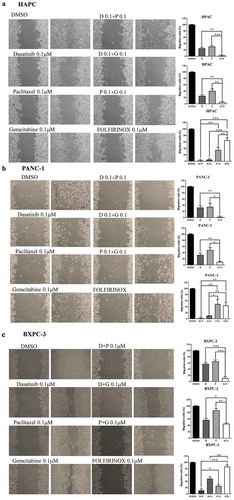
Figure 4. Combination of dasatinib with paclitaxel or gemcitabine can greatly inhibit the cell migration of mouse pancreatic cancer cells.
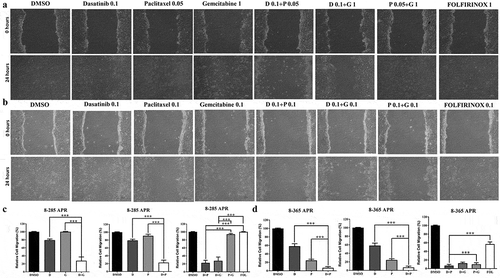
Figure 5. Dasatinib with paclitaxel or with gemcitabine can greatly reduce the cell colony formation ability of human pancreatic cancer cells.
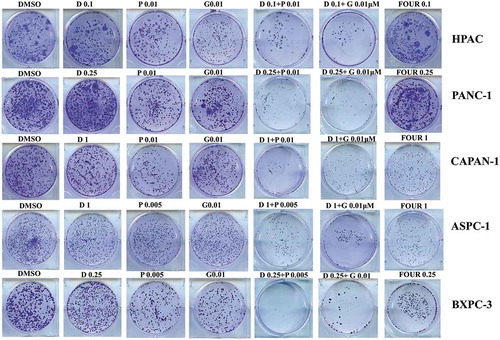
Figure 6. Combination of dasatinib with paclitaxel or gemcitabine can induce apoptosis and inhibit the activation of SRC/STAT3 pathway.
